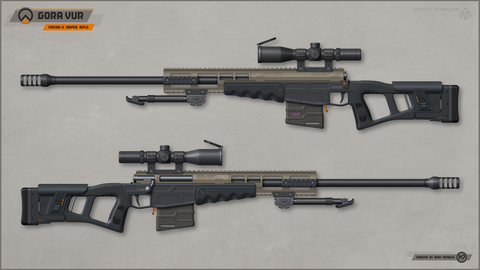HOME | DD
 Imperator-Zor — Dwarvish Runelock Rifle
Imperator-Zor — Dwarvish Runelock Rifle

Published: 2013-09-09 17:24:55 +0000 UTC; Views: 3932; Favourites: 34; Downloads: 20
Redirect to original
Description
When compared to swords, bows, crossbows, spears, axes and even crossbows, firearms are fairly difficult items to enchant. Lead does not take spells all that well and making a steel barrel which can put a spell into a projectile even more so. Some people have attempted to make enchanted firearms able to fire enchanted projectiles, used spells to drive the bullet or and some were fairly successful in meeting their goals, but they were also prohibitively expensive for sale without much advantage over crossbows or bows. That said, some more modest attempts at using magical forces to improve the performance of firearms have been more successful. The most common of these is the Dwarfish Runelock.Runelocks are a fairly simple idea to understand. A spring-loaded hammer with a small fire rune is used to ignite the propellant. The system is reliable and has the advantage of working in all weather. That said, these runes are fairly complex to make. For the price of one Runelock firearm, one could generally buy a couple of wheellocks or six to eight matchlocks. Runelocks are of Dwarvish design and usually of Dwarvish Manufacture.
The introduction of Flintlock and Caplock mechanisms, as well as latter cartridge ammunition increased the demand for firearms and thought they faced more competition, runelocks continued to be built. Runelocks as a rule ha a greater degree or reliability and were simpler than either flintlocks or caplocks. Even though Dwarves were heavily involved in the manufacture of the newer categories of rifled muskets (as they came to be with matchlocks up until the Rifle Wars), a Runelock mechanism could be applied to a rifle as easily as a flintlock could. Runelock firearms quickly became more of a sign of status. By 30 IA there was also some experimentation with breechloading and paper cartridges. A runelock did not need percussion caps to ignite powder, which simplified the production of ammunition and the adoption of these weapons. This one has a basic lever action system for opening and closing the breech.
In addition to their mechanisms, other features are present in Dwarvish runelocks. The barrels of these guns are usually made of high quality steel. They also often have some basic runes for strength inscribed into them (easier to make than the fire-runes used in their mechanism). Their calibers tend to be larger than usual, some being as large as 25mm. Ornamentation is fairly common, such as the gold inlays on this one. Even so these weapons are generally loosely standardized. Each Dwarvish enclave which is involved in their manufacture generally sets a standard caliber of bullet and sometimes mass produces certain components, but gunsmiths are given a broad amount of leeway in how they make their weapons. Though they have shown some interest in mechanized assistance in production. The cost of Runelocks has fallen, and there is some belief that some Dwarves have been looking into means of making Runelocks more quickly, but even so these weapons are still more expensive then their mundane counterparts and are usually used by people with access to a fair deal of wealth.





















